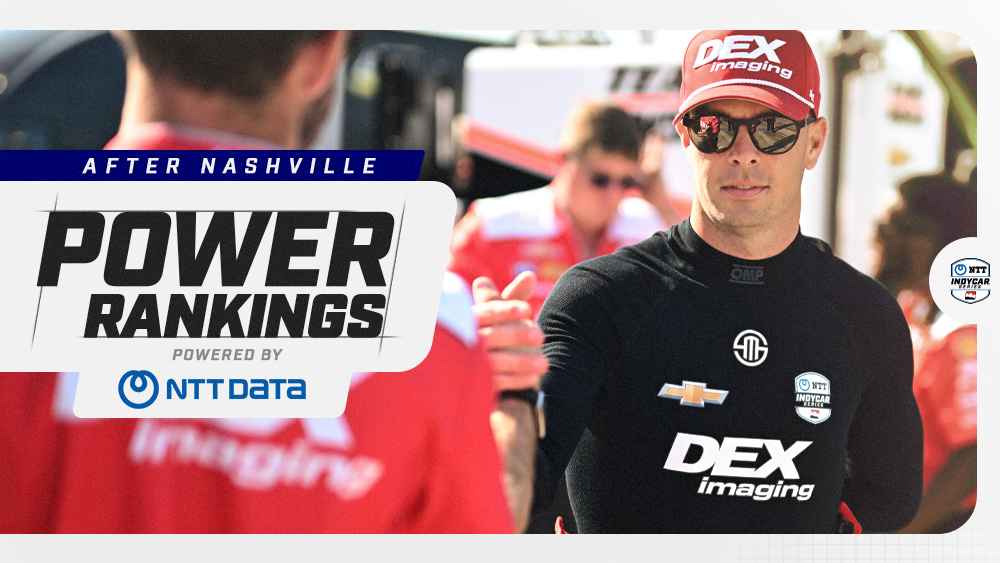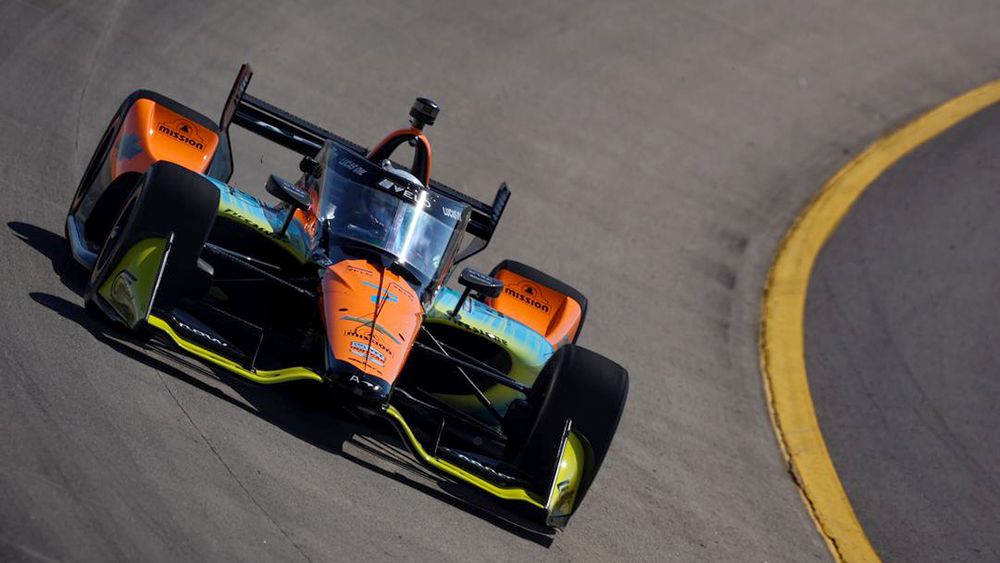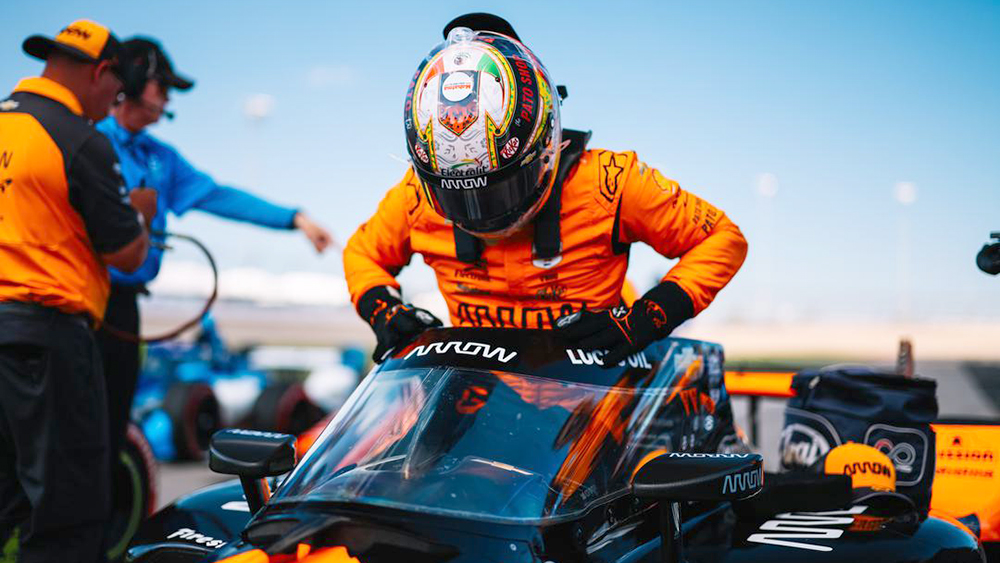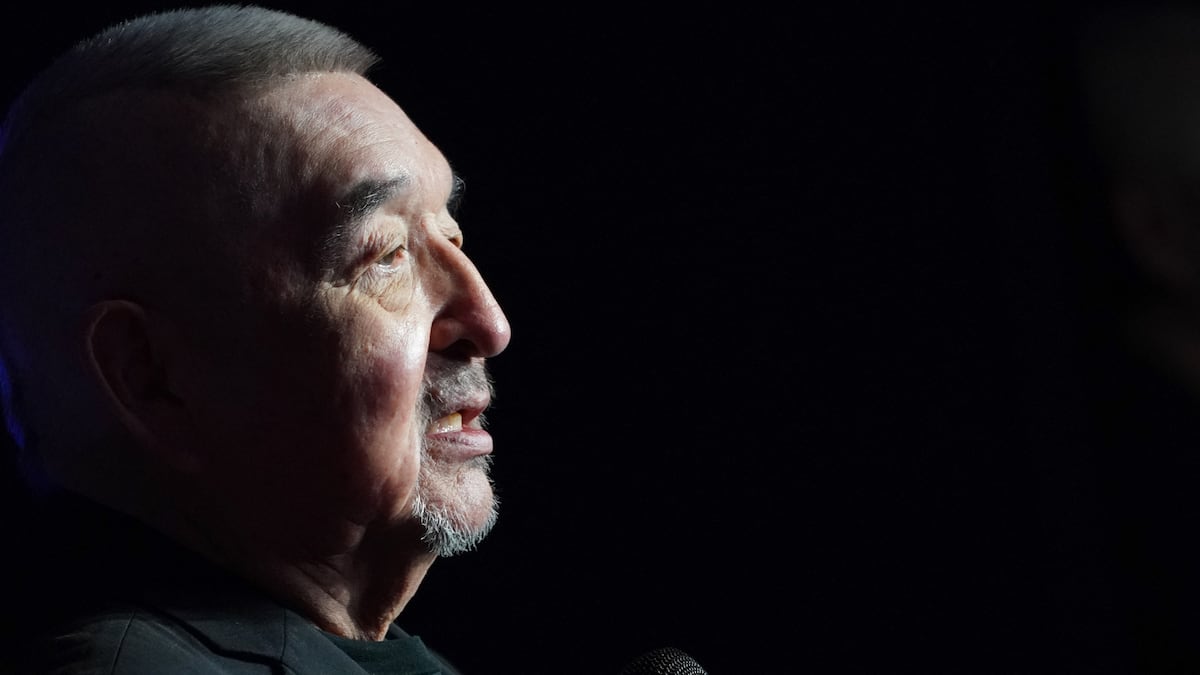- Assad and Aides Are Wanted in France for Deadly Strike on Journalists The New York Times
- France issues arrest warrant for Syria’s Assad over killing of journalists Al Jazeera
- France issues arrest warrants for Assad, ex-Syrian officials over 2012 journalist killings trtworld.com
- French Court Issues Arrest Warrants for Bashar al-Assad and Seven Others Over 2012 Journalist Killings The Syrian Observer
- France issues arrest warrant for Assad over 2012 killings of journalists Arab News
Blog
-
Assad and Aides Are Wanted in France for Deadly Strike on Journalists – The New York Times
-

How RNA helped build life’s first proteins
Researchers at University College London have discovered that activated amino acids and sulfur-containing compounds called thiols—both likely present on early Earth—can react in water at neutral pH to form high-energy thioesters. These thioesters transfer the activated amino acids to RNA in a process called RNA aminoacylation, preventing them from joining with free-floating amino acids. These findings suggest that thioesters may have provided the energy needed to unite nucleic acids and amino acids for protein biosynthesis—without the need for enzymes—in Earth’s earliest life-forms.
Proteins are essential to all life on Earth but, unlike nucleic acids such as DNA and RNA, cannot themselves pass specific sequences to their “offspring.”
“This is why life coordinates protein synthesis with another molecule, specifically RNA,” says Matthew W. Powner, lead author of the study (Nature 2025, DOI: 10.1038/s41586-025-09388-y).
In modern cells, enzymes called aminoacyl–transfer RNA (tRNA) synthetases attach amino acids to tRNA, activating them and programming the translation of RNA into proteins. But these enzymes themselves are products of the same genetic code—so how were they made in the first place? “Because you need these proteins to synthesize proteins, it’s a classic chicken-and-the-egg paradox,” Powner says. At life’s origin, these enzymes didn’t exist yet, so the team tried to figure out how amino acids attached to RNA spontaneously in water—the first way life would have had to connect genetic information to functional proteins.
Developing activated amino acids that react selectively with the 2′,3′-hydroxyl (–OH) groups of the ribose sugar of RNA—without enzymes and with other types of molecules that would be present in a cell or the early Earth at the origins of life—has proven challenging. Past attempts have led to hydrolysis or amino acids reacting with themselves. So the team considered the role that thioesters might play in this process.
Thioesters are high-energy compounds that are important in many of life’s biochemical processes and, like RNA aminoacylation, have ancient roots in biochemistry that predate the last universal common ancestor of all life on Earth. In the 1990s, Nobel laureate and biochemist Christian de Duve came up with the “thioester world” hypothesis, which posits that, based on their central role in metabolism, life’s first reactions must have been “powered” by thioesters.
After synthesizing and purifying nucleotides, nucleic acids, and activated amino acids, the team added thioesters to water at neutral pH at varying temperatures from ambient to freezing. They found that the thioesters were surprisingly stable in water, avoiding unwanted peptide formation between amino acids. In the presence of double-stranded RNA structures, thioesters selectively attached amino acids to the 2′,3′-diol groups of the ribose sugar at the 3′ of the double strand, even amid bulk water and excess amines.
The team then tested whether RNA could attach a variety of amino acids in water and found that aminoacylation occurred across all four RNA nucleotides on a broad range of amino acids, including charge residues such as arginine and lysine.
Finally the researchers investigated how these amino acids that were attached to RNA could be used for peptide synthesis under the same plausible prebiotic conditions. They found that when thioesters react with hydrogen sulfide, they form highly reactive thioacids. Those compounds could then be activated to bond with amino acids, even those attached to RNA—switching on peptide synthesis. Ultimately they found that thioesters were selective for aminoacylating RNA, while thioacids enable peptide bond formation, which allows for the stepwise, controlled synthesis of peptides attached to RNA.“A key step missing from prebiotic studies until now has been the use of chemical free energy transfer reactions to overcome the uphill chemistry of assembling polymers in water,” says Charlie Carter, a biochemist and biophysicist at the University of North Carolina School of Medicine who was not involved in this study. “The simplicity of the chemistry used here strongly suggests that it played a significant role in helping to create conditions for life to emerge,” he adds.
Chemical & Engineering News
ISSN 0009-2347
Copyright ©
2025 American Chemical SocietyContinue Reading
-

Most people don’t care ‘at all’ about Taylor Swift and Travis Kelce’s engagement
Ever since Taylor Swift and Travis Kelce announced their pending nuptials on Instagram last week, the pair’s engagement has been one of the biggest stories in the world.
Yet the vast majority of Americans — a full 78% — say they don’t care “at all” about Taylor and Travis’s new relationship status, according to the latest Yahoo/YouGov poll.
The survey of 1,690 U.S. adults, which was conducted from Aug. 29 to Sept. 2, found that just 4% of respondents say they care “a lot” about the engagement; the remaining 18% say they care “a little.”
It’s a surprising level of indifference to what has been, by any measure, a major pop-culture moment — the betrothal of America’s dominant singer-songwriter to one of its most famous football players. The ring has been scrutinized. So have Swift’s songs. Celebrities have “reacted.” Even President Trump weighed in (during a Cabinet meeting, no less).
“I think he’s a great player,” Trump said last Tuesday. “And I think that she’s a terrific person. So I wish them a lot of luck.”
As a result, Americans are certainly aware of the Swift-Kelce engagement. According to the poll, more than three-quarters of them have heard or read a lot (23%) or a little (54%) about it.
It’s just that very few are openly obsessed with it.
Even dividing up the new Yahoo/YouGov data by demographics doesn’t really change that dynamic. Sure, Americans ages 18 to 29 are more likely to say they care “a little” about Taylor and Travis’s engagement (26%) than Americans in general (again, 18%). But 70% of U.S. adults under 30 still say they don’t care at all.
Meanwhile, there’s no statistical difference between the number of men and women who say they care — or don’t.
Perhaps because of this relative disinterest, most Americans are also reluctant to judge Swift and Kelce’s relationship. When offered the option, few say that “Taylor Swift could do better than Travis Kelce” (3%) or that “Travis Kelce could do better than Taylor Swift” (4%). More say that “Taylor Swift and Travis Kelce are good for each other” (23%). But most defer, selecting “It’s not for me to say” instead (60%).
Similarly, 54% of Americans say they’re not sure how long Swift and Kelce’s marriage will last — “if you had to guess.” But among those willing to make a prediction, more say “a few years or less” (22%) — the shortest option — than say “forever” (12%).
__________________
The Yahoo survey was conducted by YouGov using a nationally representative sample of 1,690 U.S. adults interviewed online from Aug. 29 to Sept. 2, 2025. The sample was weighted according to gender, age, race, education, 2024 election turnout and presidential vote, party identification and current voter registration status. Demographic weighting targets come from the 2019 American Community Survey. Party identification is weighted to the estimated distribution at the time of the election (31% Democratic, 32% Republican). Respondents were selected from YouGov’s opt-in panel to be representative of all U.S. adults. The margin of error is approximately 3.1%.
Continue Reading
-

Palou Leads Wire to Wire in Dream Season
Editor’s Note: Power Rankings is a feature after every NTT INDYCAR SERIES race in which INDYCAR.com staff writer Eric Smith ranks the top-10 current drivers in the series based on objective recent and season-long performance statistics and the subjective “eye test” of what he sees during race weekends.
Alex Palou secured his fourth NTT INDYCAR SERIES championship and capped off the 2025 season with his fourth consecutive podium finish by coming home second in the Borchetta Bourbon Music City Grand Prix presented by WillScot on Aug. 31 at Nashville Superspeedway — his 13th podium of the year.
Palou finished the season atop the Power Rankings for the second straight season. Here’s how the rest of the field stacked up after Nashville in the final edition this season.
↑10. Callum Ilott (No. 90 PREMA Racing Chevrolet; Last Rank: NR)
Ilott ended his first season with PREMA Racing on a high, scoring a ninth-place finish – his fourth top-10 in the final five races. Before this late surge, his best result was 13th on July 6 at Mid-Ohio Sports Car Course.
↓9. Marcus Armstrong (No. 66 ROOT Insurance Honda; Last Rank: 7)
Armstrong (photo, above) was on track for another top-10 finish in Nashville before a late-race blocking penalty sent him to pit road. Running 10th at the time of the penalty on Lap 201 of the 225-lap race, he dropped to a disappointing 19th-place finish. Still, Armstrong ended the season with 11 top-10s, nine of them coming in his final 11 races.
↓8. Christian Rasmussen (No. 21 ECR Splenda Stevia Chevrolet; Last Rank: 5)
Rasmussen’s season ended on a sour note with a first-lap crash in Nashville, just one race after his maiden NTT INDYCAR SERIES win at the Milwaukee Mile. Still, he produced four top-10 finishes in the final seven races.

↑7. Josef Newgarden (No. 2 Astemo Team Penske Chevrolet; Last Rank: NR)
Newgarden (photo, above) extended his win streak to 11 years with a much-needed victory in the season finale at his home track. It was his 32nd career win, breaking a tie for 10th all-time with Paul Tracy. He climbed from 18th to 12th in the standings with two straight top-seven finishes and five top-11 results in his last seven starts.
↑6. Scott Dixon (No. 9 PNC Bank Chip Ganassi Racing Honda; Last Rank: 8)
Dixon qualified fifth but finished 12th in Nashville. Still, he finished third in the standings, and his pit crew won the season’s Firestone Pit Stop Performance Award as the top team on pit road. Dixon closed 2025 with 11 straight top-12 finishes.

↓5. Christian Lundgaard (No. 7 Arrow McLaren Chevrolet; Last Rank: 3)
Despite a 25th-place finish at Nashville due to a mechanical failure, Lundgaard (photo, above) qualified third and wrapped up a career-best fifth in points. He posted four top-six finishes in his final six races, including two runner-up efforts in the last four.
↑4. Alexander Rossi (No. 20 ECR Java House Chevrolet; Last Rank: 6)
Rossi finished strong with three consecutive top-10 results, including two top-five finishes at Portland and Milwaukee. Before that, he had just four top 10s in 14 races. Rossi ended his first season with Ed Carpenter Racing 15th in points and surging.

↓3. Pato O’Ward (No. 5 Arrow McLaren Chevrolet; Last Rank: 2)
O’Ward’s form dipped late in the season, finishing 24th or worse in two of the final three races. However, he qualified on the front row for both, including the NTT P1 Award at Nashville, where he led a race-high 116 of 225 laps before crashing out while leading due to a deflated tire. O’Ward (photo, above) ended the season second in points, with six podiums and 10 top-five finishes.
↑2. Scott McLaughlin (No. 3 DEX Imaging Team Penske Chevrolet; Last Rank: 4)
McLaughlin (photo, top) finished the season on a roll with four consecutive top-10s, including back-to-back third-place finishes to close out the year.

↔1. Alex Palou (No. 10 DHL Chip Ganassi Racing Honda; Last Rank: 1)
Palou (photo, above) locked up his fourth title with a dominant season: eight wins in 17 starts, 1,729 laps led and eight top-five finishes in the final nine races. He ended 2025 with back-to-back runner-up finishes and also led the Power Rankings for the entire season, from St. Petersburg to Nashville. Palou and the No. 10 team are the unquestioned gold standard in the series right now.
Continue Reading
-

Jason Segel Joins Angelina Jolie & Aimee Lou Wood In ‘Anxious People’
EXCLUSIVE: Black Bear, Hope Studios, 2DUX2, and World Wide Word are underway in London on Anxious People, with Jason Segel joining the cast.
The three-time Emmy nominee joins Oscar winner Jolie and Bafta-winner Aimee Lou Wood in the feature adaptation of Fredrik Backman’s novel.
As we previously revealed, A Man Called Otto and World War Z director Marc Forster is helming from a script by Oscar-nominated screenwriter David Magee.
In Anxious People, “on the day before Christmas Eve, investment banker Zara begrudgingly finds herself mingling with a group of strangers at an open house. When a reluctant bank robber, Grace, inadvertently takes the group hostage, chaos and oversharing ensues, secrets are revealed, and literally nothing goes according to plan.”
Pic is being produced by Fredrik Wikström Nicastro of Hope Studios and Renée Wolfe of 2DUX2, with Marc Forster, David Magee, and Neda Backman executive-producing. World Wide Word, the newly formed financing entity of 2DUX2, and Black Bear provided financing for the film.
Black Bear is handling the international sales of the movie and WME Independent is repping domestically.
The production will be the first to use the newly launched Pinewood Indie Film Hub, a dedicated production facility for independent filmmakers at Pinewood Studios.
Segel stars in hit comedy series, Shrinking, which he co-writes and executive produces. Next, he will star in Jorma Taccone’s feature, Over Your Dead Body.
Segel is represented by UTA, Ocean Avenue, and Sloane, Offer.
Continue Reading
-

Best Pics and Quotes from New Jersey Show
Night two of Oasis’ New Jersey takeover brought scores of young lads and ladies out to MetLife Stadium on Labor Day. The crowd sounded largely British, in line with the band’s massive popularity in the U.K., and fans were out in droves to sing along with the reunited brothers Gallagher. Fueled by a frenzied search for band merch and a pride in getting tipsy well before the show began, there was plenty of hilarious banter to be heard beyond the music. Below, a selection of some of the night’s funniest bon mots, followed by a collection of photos of the band in action.
“She said it was her or the bucket hat … so I chose the bucket hat!” — A behatted fan in a beer line
“It’s so smart, innit? To have a can filled with a Jameson Ginger and Lime…it’s all you need. Americans do bring good things to the world.” — A fan in a self-service cocktail line
“Don’t tell Jack that I only know ‘Wonderwall’…” — A casual fan being vulnerable with a friend in the line to the men’s bathroom
“Hey, he just cut the line!” “He’s a tall fucker, I ain’t talking to him. I just hope he pisses on his trainers.” — Two friends waiting in the long bathroom line
“Why has he got a tambourine in his mouth?” “Well, what would you do with it?” — One friend to another when Liam Gallagher had a tambourine in his mouth for an extended period of time
“In America, we’ve had some mega times on and off this stage. Don’t listen to all the other knobheads going, ‘We don’t like you’ and all that nonsense. What we didn’t like was being told by fat idiots that we had to play the game. As we stand here in front of you beautiful people tonight in this beautiful stadium, there has been no fucking game playing.” — Liam Gallagher, unprompted, during the set
“Sorry, love: Was too drunk and forgot to flush the toilet.” — A woman bursting down the door to a ladies’ room stall
“That was biblical. I lost my voice singing along.” “You’re fucking talking now, aren’t you?” — Two friends walking in the parking lot after the show
Continue Reading
-

YouTube’s AI editing scandal reveals how reality can be manipulated without our consent
Disclosure, consent and platform power have become newly invigorated battlefields with the rise of AI.
The issue came to the fore recently with YouTube’s controversial decision to use AI-powered tools to “unblur, denoise and improve clarity” for some of the content uploaded to the platform. This was done without the consent, or even knowledge, of the relevant content creators. Viewers of the material knew nothing of YouTube’s intervention.
Without transparency, users have limited recourse to identify, let alone respond to, AI-edited content. At the same time, such distortions have a history that significantly predates today’s AI tools.
A new kind of invisible edit
Platforms such as YouTube aren’t the first to engage in subtle image manipulation.
For decades, lifestyle magazines have “airbrushed” photos to soften or sharpen certain features. Not only are readers not informed of the changes, often the celebrity in question isn’t either. In 2003, actor Kate Winslet angrily decried British GQ’s choice to alter her cover shot – which included narrowing her waist – without her consent.
The wider public has also shown an appetite for editing images before posting to social media. This makes sense. One 2021 study that looked at 7.6 million user-posted photos on Flickr found filtered photos were more likely to get views and engagement.
However, YouTube’s recent decision demonstrates the extent to which users may not be in the driver’s seat.
TikTok faced a similar scandal in 2021, when some Android users realised a “beauty filter” had been applied automatically to their posts without their consent or disclosure.
This is especially concerning as recent research has found a link between the use of appearance-enhancing TikTok filters and self-image concerns.
Undisclosed alterations extend to offline as well. In 2018, new iPhone models were found to be automatically using a feature called Smart HDR (High Dynamic Range) to “smooth” users’ skin. This was later described by Apple as a “bug”, and was reversed.
These issues also collided in the Australian political sphere last year. Nine News published an AI-modified photo of Victorian MP Georgie Purcell that exposed her midriff, whereas it was covered in the original photo. They did not tell viewers the image they used had been edited with AI.
The issue isn’t limited to visual content, either. In 2023, author Jane Friedman found Amazon selling five AI-generated books under her name. Not only were they not her works, they also posed the risk of significant reputational harm.
In each of these cases, the algorithmic alterations were presented without disclosure to those who viewed them.
The disappearing disclosure
Disclosure is one of the simplest tools we have to adapt to an increasingly altered AI-mediated reality.
Research suggests companies that are transparent about their use of AI algorithms are more likely to be trusted by users with the users’ initial trust in the company and AI system playing a significant role.
While users have demonstrated diminishing trust in AI systems globally, they have also shown increasing trust in AI they have used themselves, including the belief that it will inevitably get better.
So why do companies still use AI without disclosing it? Perhaps it’s because disclosures of AI use can be problematic. Research has found disclosing AI use consistently reduces trust in the relevant person or organisation, although not as much as if they are discovered to have used AI without disclosure.
Beyond trust, the impact of disclosures is complex. Research has found disclosures on AI-generated misinformation are unlikely to make that information any less persuasive to viewers. However, they can make people hesitate to share the content, for fear of spreading misinformation.
Sailing into the AI-generated unknown
With time it will only get harder to identify confected and manipulated AI imagery. Even sophisticated AI detectors remain a step behind.
Another big challenge in fighting misinformation – a problem made worse by the rise of AI – is confirmation bias. This refers to users’ tendency to be less critical of media (AI or otherwise) that confirms what they already believe.
Fortunately there are resources at our disposal, provided we have the presence of mind to seek them out. Younger media consumers in particular have developed strategies that can push back against the tide of misinformation on the internet. One of these is simple triangulation, which involves seeking out multiple reliable sources to confirm a piece of news.
Users can also curate their social media feeds by purposefully liking or following people and groups they trust, while excluding poorer quality sources. But they may face an uphill battle, as platforms such as TikTok and YouTube are inclined towards an infinite scroll model that encourages passive consumption over tailored engagement.
While YouTube’s decision to alter creators’ videos without consent or disclosure is likely within its legal rights as a platform, it puts its users and contributors in a difficult position.
And given previous cases from other major platforms – as well as the outsized power digital platforms enjoy – this probably won’t be the last time this happens.
Continue Reading
-

Oscar-nominated actor Graham Greene, of ‘Dances With Wolves,’ dies at 73
Graham Greene attends a screening of Antlers in New York on Oct. 25, 2021.
Bryan R. Smith
One of the most respected Indigenous actors of his generation, Graham Greene appeared in more than 200 television shows and movies, including the 1990 blockbuster Dances With Wolves. For his role as a Lakota warrior who allies himself with a Civil War soldier played by Kevin Costner, Greene was nominated for an Academy Award for best supporting actor.
Greene died Monday in Stratford, Ontario, of natural causes, according to a statement provided to NPR by his manager, Gerry Jordan.
In Dances with Wolves, Greene’s dialogue was in the Lakota language. But Greene was part of the Oneida Nation, born on the Six Nations of the Grand River reserve near Brantford, Ontario. Later, he told the Television Academy that learning those lines was his greatest challenge. He studied Lakota for eight hours every day, seven days a week.
“I don’t even speak my own language,” he said in that 2023 interview. “We were taught not to speak it. It’s like forgetting your heart.”
Greene found his way into acting after working as a steelworker and welder and as a roadie for rock bands. He appeared in numerous small roles in huge films, including as a convict in The Green Mile, a detective in Die Hard with a Vengeance and as a tribal chief in two films in The Twilight Saga. He was also a familiar presence on television shows and miniseries such as American Gods, The Last of Us, Tulsa King and Reservation Dogs.
Greene was also a stage actor, who performed at Canada’s prestigious Stratford Festival and at Native Earth Performing Arts, which bills itself as the country’s oldest professional Indigenous theater company.
Continue Reading
-

30 Years Later, the Lady Dior Bag Is Still a Hot Celebrity Favorite
These days, it’s difficult for handbags to reach true It bag status; they can be hot one minute, then fade into oblivion the next. Remember the Gucci Marmont bags of 2016? Virtually every star carried one, and now, you rarely see them. It’s not to say they won’t come back into style again: Recently, the Chloé Paddington of the 2000s, and the Celine Phantom of the 2010s, have both enjoyed a revival. There are some bags, however, that have avoided the It bag curse entirely, and remained icons for years to come—even decades.
Take the Lady Dior bag. First introduced in 1995 and designed by Gianfranco Ferré, the sleek accessory remains a celebrity favorite, even today. The petite, boxy leather bag—featuring a quilted pattern and top-handle silhouette—debuted when it was presented to Princess Diana, as a gift from the former First Lady of France, Bernadette Chirac. The following year, the style was dubbed the Lady Dior, as a tribute to Diana.
In the three decades that have followed, stars have continued to gravitate towards the classic and elegant bag—and Dior has routinely updated it too, releasing it in a variety of new colors and materials. (There are now mini versions and elongated styles.) It’s no wonder why the French label has a hit on their hands: Its clean, structured shape is extremely timeless, and can meld to just about any personal style.
The large array of celebrities who have carried it over the years are certainly indicative of its versatility, whether it has been paired with a great tailored coat, or a more casual pair of jeans. It looks just as good with a refined skirt suit—as first worn by Princess Diana—as it does with an edgier all-black ensemble and dramatic chapeau, as sported by Rihanna to the label’s spring couture show last year. That’s the making of a real hit bag, isn’t it? Something that can add a subtle finishing touch to just about any outfit.
Continue Reading
-

Economic growth in Hungary hinges on consumer spending | articles
Looking ahead, weak business and consumer confidence are still the main constraints on the Hungarian economy. This confidence reached historic highs in the years leading up to the polycrisis (2018–2019). Unpredictable external factors such as geopolitics and tariffs, as well as uncertain global and local growth prospects, are holding back investment activity. Contrary to what would be expected in a macroeconomic textbook, high inflation and elevated inflation expectations are encouraging Hungarian households to save rather than consume. Although government interventions are directly boosting economic growth via government consumption and social transfers, they have yet to lead to a lasting turnaround in business and consumer confidence.
The biggest surprise in the detailed GDP data was the stronger-than-expected growth in actual final consumption, which now makes a bigger contribution to economic activity. However, the side effect is a stronger increase in import demand. Consequently, we have shifted to a less balanced growth outlook. While we have kept the 0.7% GDP growth forecast for 2025 unchanged, this comes with a significant negative contribution from net exports. The Hungarian economy still lacks external demand, with no quick change in sight. Rising consumption is putting pressure on the import channel. Furthermore, the one-off rise in exports due to tariff threats has now been reversed, resulting in a significant increase in imports, and consequently in inventories.
The volatility of the German economy and the uncertainty surrounding French domestic politics suggest that a rapid recovery is unlikely, and an upturn in external demand is not expected in the near future. Furthermore, the positive impact of the German investment programme and the increase in EU defence spending is not expected until 2026–2027. Against this backdrop, we anticipate a positive shift in the Hungarian economic outlook in the years ahead. As next year is an election year, we anticipate a significant increase in consumption, a gradual improvement in investment activity, and a negative statistical impact from shrinking inventories as the economic cycle turns. Exports will slowly pick up, but we do not expect a positive contribution from net exports until 2027.
Continue Reading